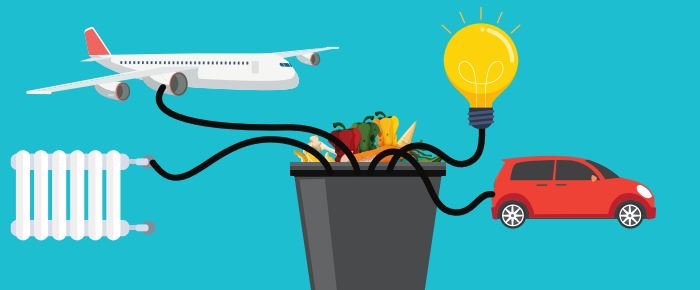페이지 정보
본문

Smart Waste Management in Seoul - Resource Recovery
Hi, I'm Putri. On my field trip with my friends last week, we visited Mapo resource recovery facility in Seoul. Our trip was very memorable for me, because for the first time I saw firsthand the advanced and environmentally friendly waste processing technology.
Until the 1990s Seoul’s waste management method was predominantly landfill, but this could not continue forever. With expansion of the city and its economy, securing available sites for landfill became more and more difficult.
The new state-of-the-art incinerators are called ‘Resource Recovery Facilities‘, and burn solid urban waste at 850-950℃ to recover the heat produced in the process. The high-pressure steam produced is used as an alternative source of energy that provides heat for nearby communities. This is why resource recovery facilities are conceptually different from traditional incinerators.
There are four resource recovery facilities in the Seoul area (Nowon, Yangcheon, Gangnam and Mapo). The first resource recovery facility in Seoul opened in Yangcheon-gu in 1996, with a capacity of 150 tons per day. Since then, Seoul has acquired three more resource recovery plants in Nowon-gu, Gangnam-gu, and Mapo-gu. Together they process an average of 2,850 tons of household waste every day. The Mapo Resource Recovery Plant converts 750 tons of waste into power every day, and this is shared with five administrative districts in northwest Seoul, namely Mapo-gu, Yongsan-gu, Jung-gu, Jongro-gu and Seodaemun-gu.
Waste-to-energy initiatives are Seoul’s way of paving the path to a circular economy. Seoul’s experience has proven to the world that retrieving energy from waste can not only substitute reliance on fossil fuels and landfill, but can also become a source of revenue.
Along with the land stabilization process, Seoul also began shaping landfill into a park. Sangam-dong where the landfill is located was chosen as the construction site for the 2002 World Cup stadium. The decision brought about the need for the area’s transformation into an eco-park. Goals of the project were clear; Seoul was to show the world that a land of death, symbolic of ill effects of urbanization and industrialization could be reborn as an ecological space.
Today, the World Cup Park attracts 10 million visitors annually. The Park offers a wide range of special programs, performances and festivals such as the famous silver grass festival at Haneul Park located within the World Cup Park. It also serves as a popular destination for camping and fun golfing outings.

Recorded by Putri
3 May 2022
Script
Hi, I'm Putri. On my field trip with my friends last week, we visited Mapo resource recovery facility in Seoul. Our trip was very memorable for me, because for the first time I saw firsthand the advanced and environmentally friendly waste processing technology. Until the 1990s Seoul’s waste management method was predominantly landfill, but this could not continue forever. With expansion of the city and its economy, securing available sites for landfill became more and more difficult. The new state-of-the-art incinerators are called ‘Resource Recovery Facilities‘, and burn solid urban waste at 850-950℃ to recover the heat produced in the process. The high-pressure steam produced is used as an alternative source of energy that provides heat for nearby communities. This is why resource recovery facilities are conceptually different from traditional incinerators. There are four resource recovery facilities in the Seoul area (Nowon, Yangcheon, Gangnam and Mapo). The first resource recovery facility in Seoul opened in Yangcheon-gu in 1996, with a capacity of 150 tons per day. Since then, Seoul has acquired three more resource recovery plants in Nowon-gu, Gangnam-gu, and Mapo-gu. Together they process an average of 2,850 tons of household waste every day. The Mapo Resource Recovery Plant converts 750 tons of waste into power every day, and this is shared with five administrative districts in northwest Seoul, namely Mapo-gu, Yongsan-gu, Jung-gu, Jongro-gu and Seodaemun-gu. Waste-to-energy initiatives are Seoul’s way of paving the path to a circular economy. Seoul’s experience has proven to the world that retrieving energy from waste can not only substitute reliance on fossil fuels and landfill, but can also become a source of revenue. Along with the land stabilization process, Seoul also began shaping landfill into a park. Sangam-dong where the landfill is located was chosen as the construction site for the 2002 World Cup stadium. The decision brought about the need for the area’s transformation into an eco-park. Goals of the project were clear; Seoul was to show the world that a land of death, symbolic of ill effects of urbanization and industrialization could be reborn as an ecological space. Today, the World Cup Park attracts 10 million visitors annually. The Park offers a wide range of special programs, performances and festivals such as the famous silver grass festival at Haneul Park located within the World Cup Park. It also serves as a popular destination for camping and fun golfing outings.
첨부파일
-
WhatsApp Audio 2022-05-03 at 19.23.13.mp4 (3.8M)
0회 다운로드 | DATE : 2022-05-03 19:24:28
